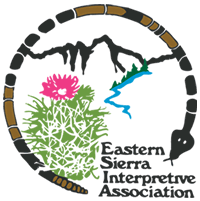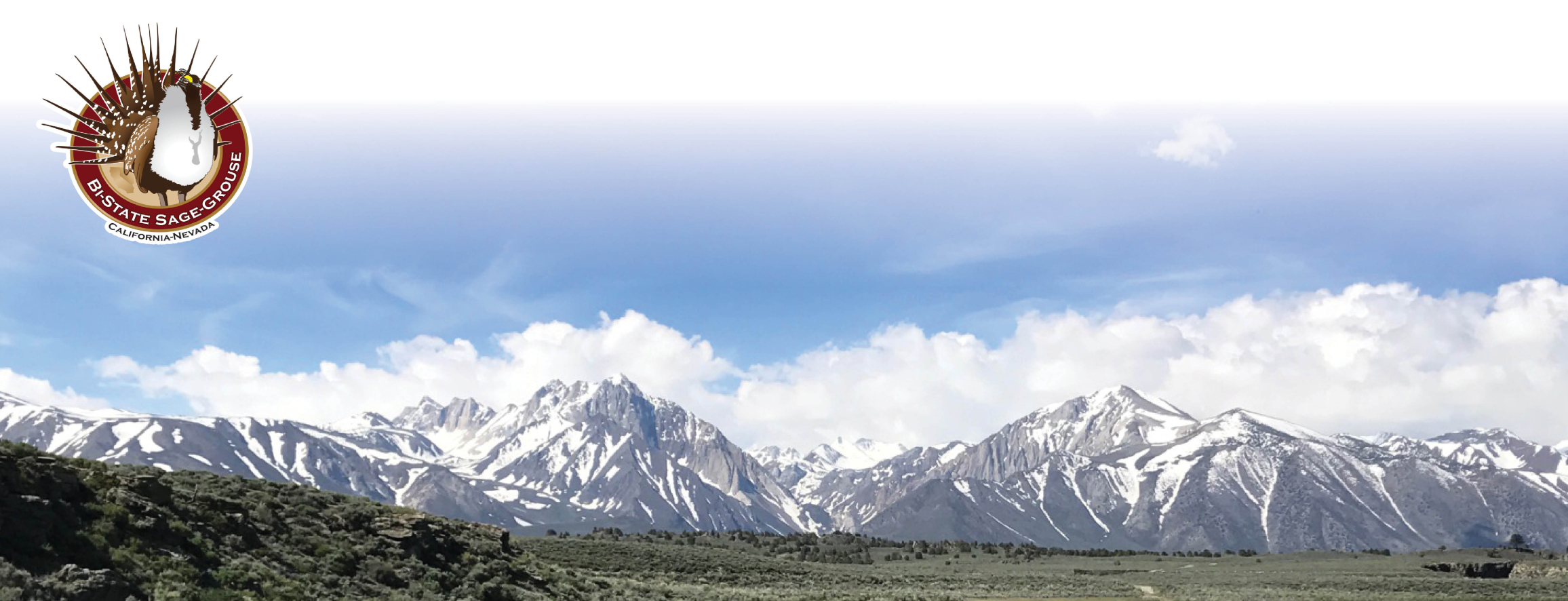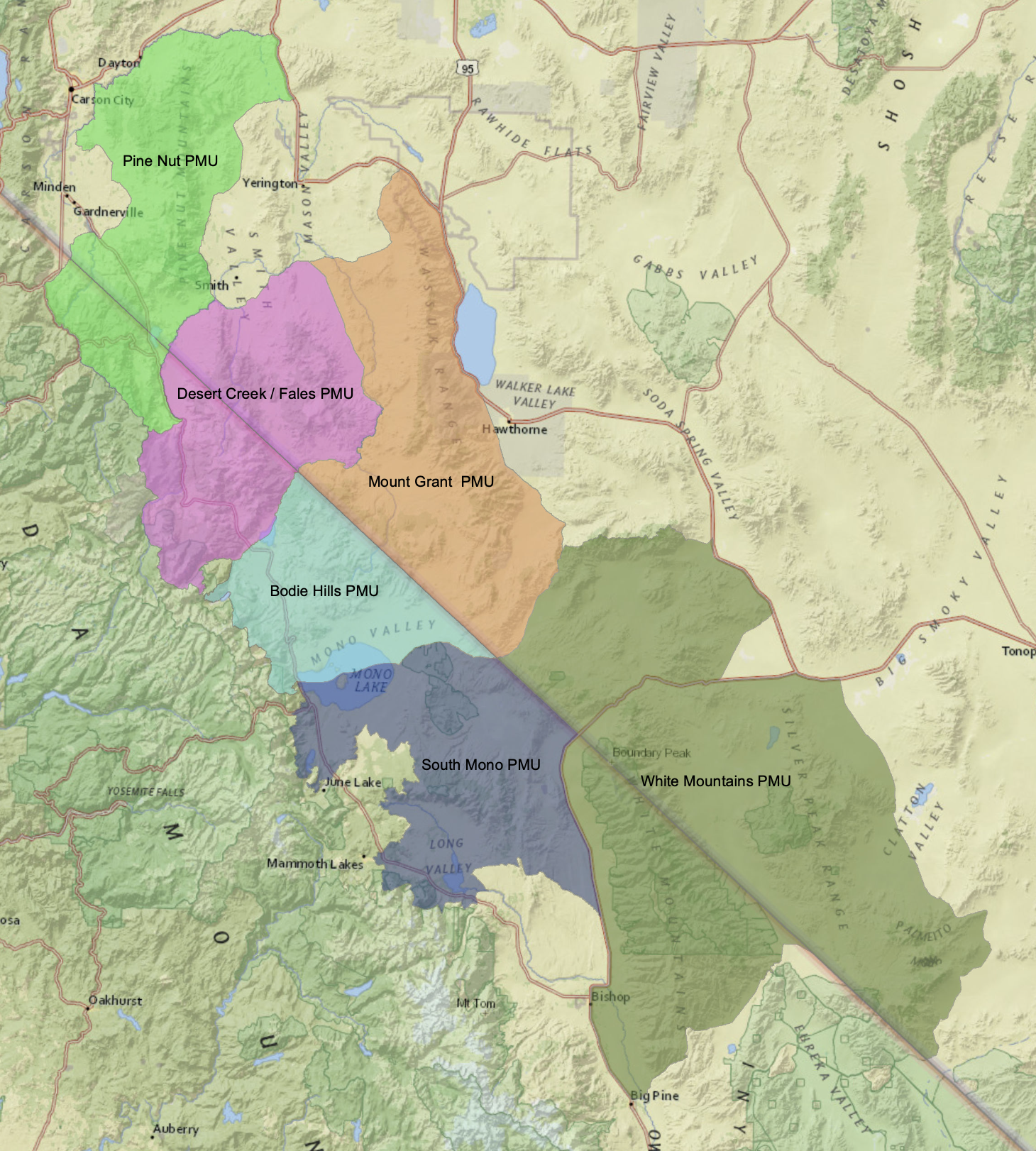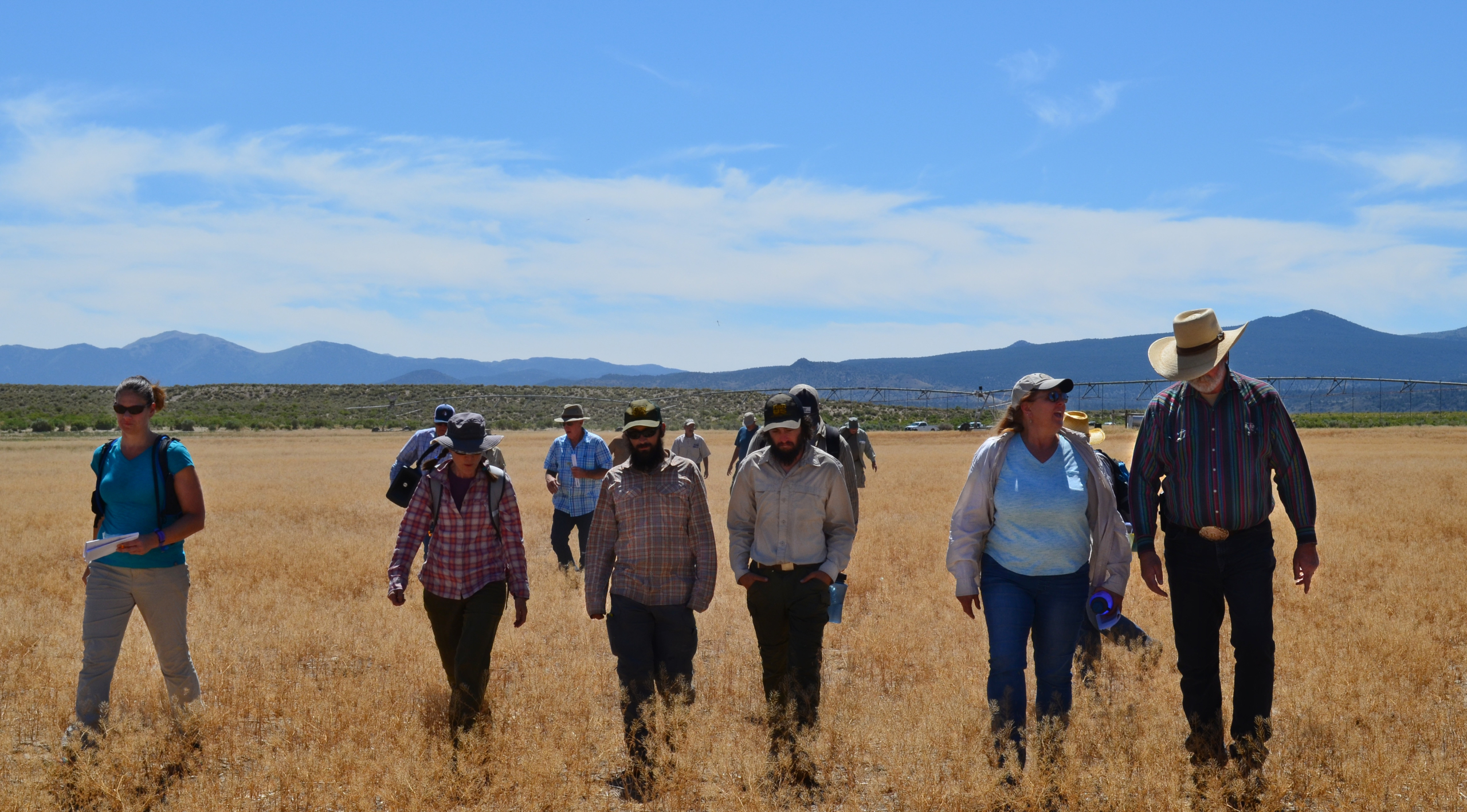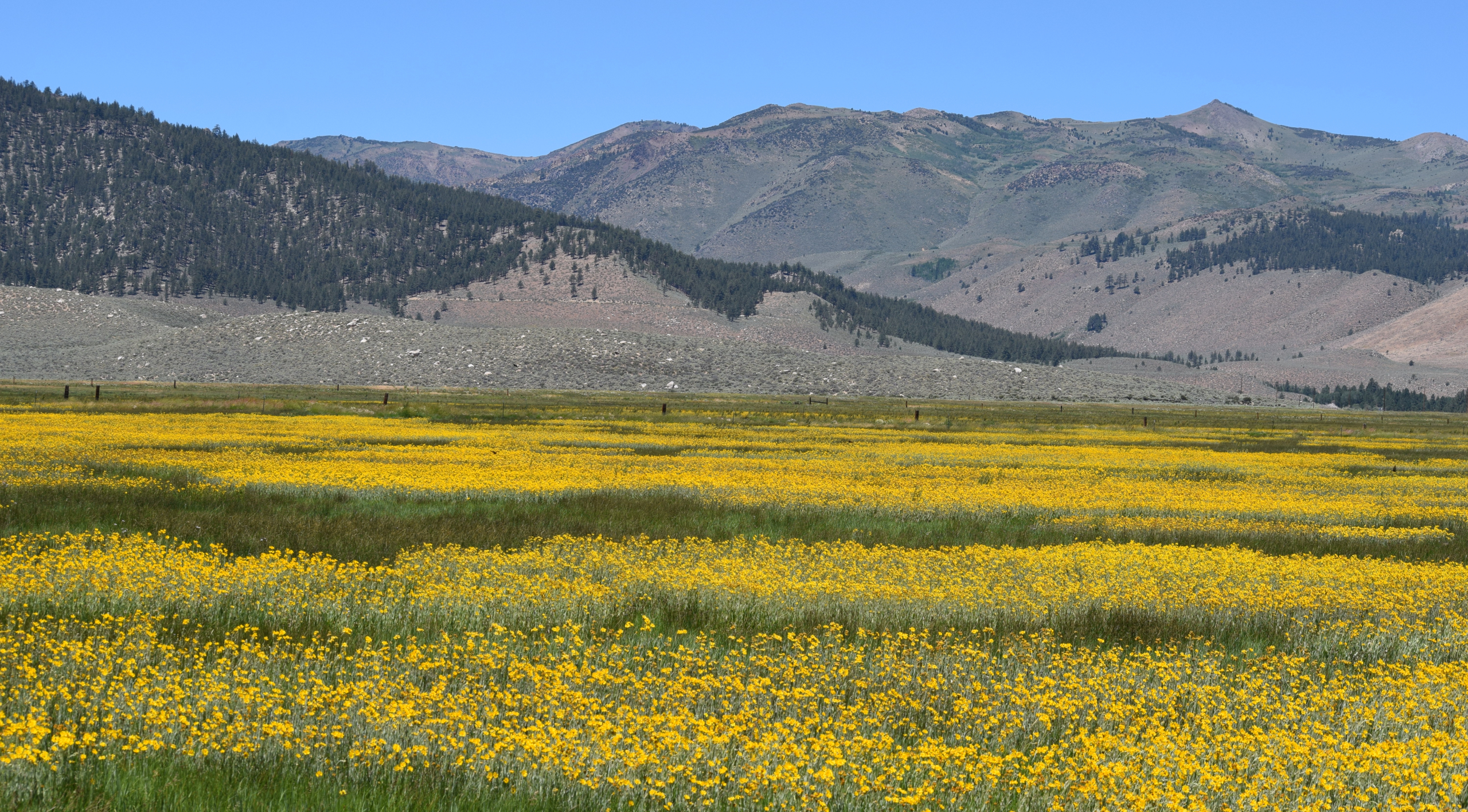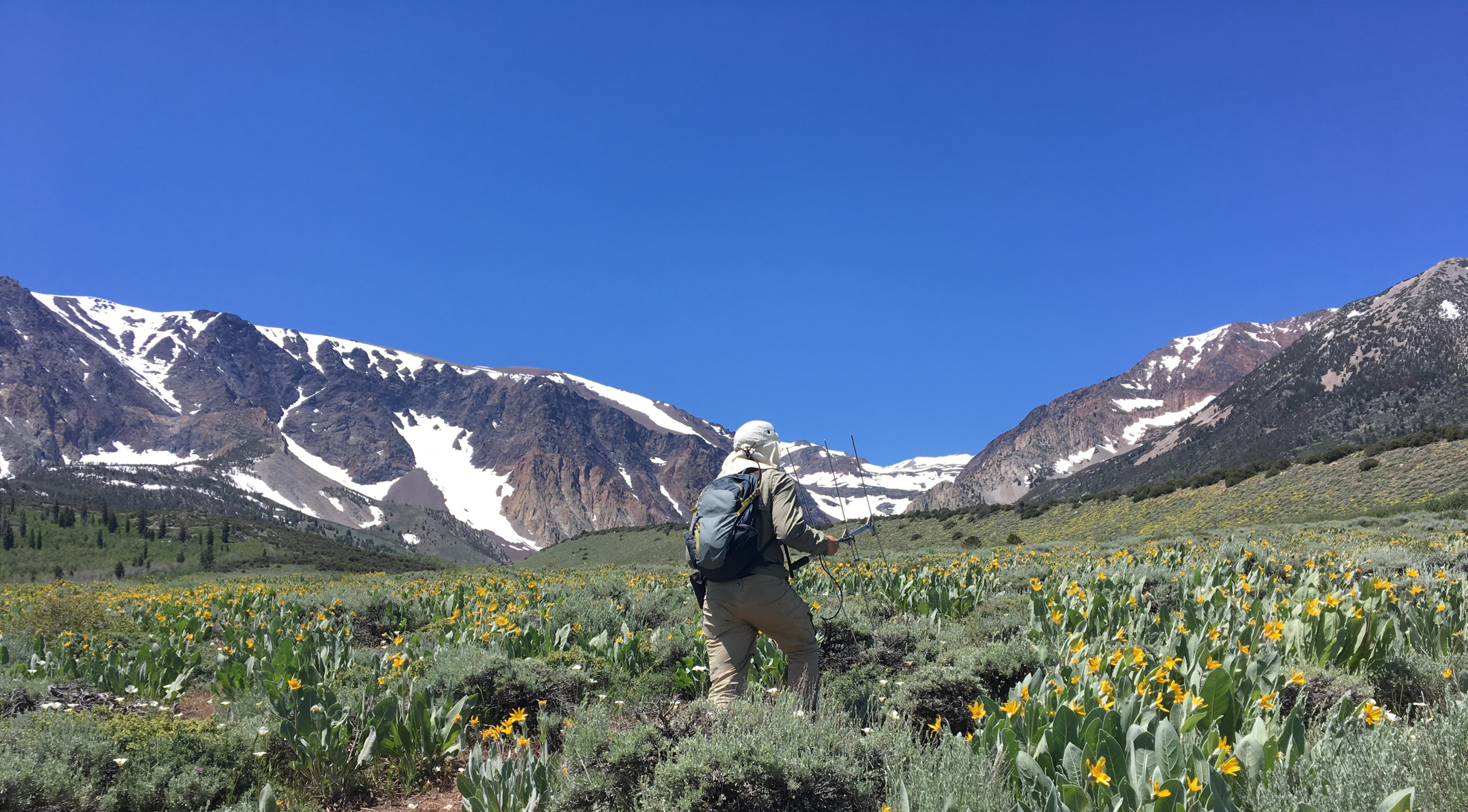Bi-State Area
The Bi-State area occurs along the California-Nevada border and covers an area approximately 170 miles long and up to 60 miles wide. It includes portions of five counties in western Nevada: Douglas, Lyon, Mineral, Carson City, and Esmeralda; and three counties in eastern California: Alpine, Mono, and Inyo. Land ownership is composed of federal, state, county, tribal and private lands.
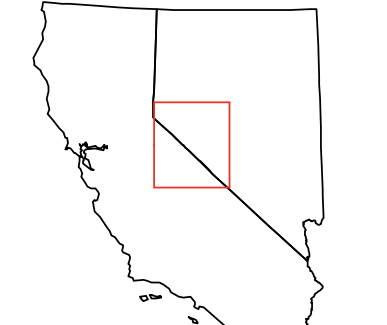
Population Management Units
In 2001, the Nevada Governor’s Sage-Grouse Conservation Team delineated six population management units (PMUs) which have since been used to manage and monitor sage-grouse in the Bi-State. PMUs are broad areas within which populations, local breeding complexes, leks, and known seasonal habitats are, or historically were, known to occur. While these units serve as reference areas for tracking conservation actions and monitoring sage-grouse population performance and distribution, they do not represent sage-grouse range/habitat, nor do they hold legal significance. Therefore, PMU boundaries alone have no influence on local laws, policies or plans for jurisdictions occurring within any given PMU. The Bi-State DPS includes six PMUs (from north to south): Pine Nut, Desert Creek–Fales, Bodie Hills, Mount Grant, South Mono, and White Mountains
Bi-State Sage-Grouse
The Bi-State sage-grouse is a genetically unique meta-population of greater sage-grouse, known as a distinct population segment, that lives in the far southwestern limit of the species’ range in the Bi-State area. This genetic distinction may be the result of natural geologic events and subsequent long-term geographic isolation based on prevailing physiographic and habitat conditions. Learn more about sage-grouse biology here.
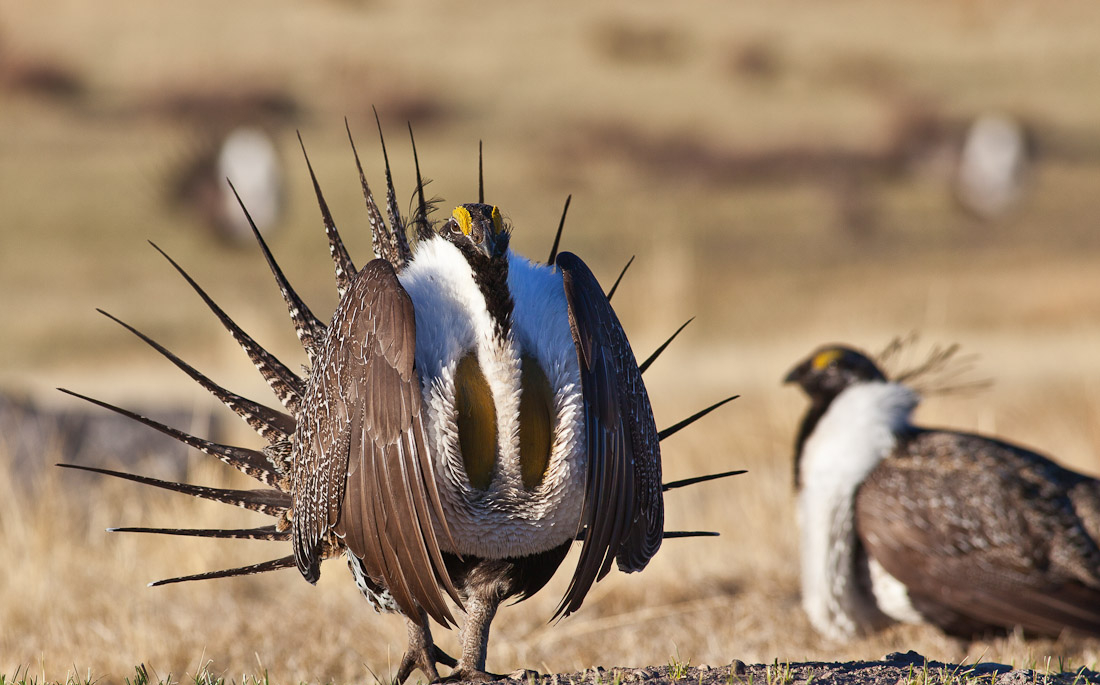
Sage-grouse Photo credit: Bob Wick
Threats
The primary threats to the Bi-State sage-grouse and its habitat vary by population management unit. Wildfire poses a significant threat to the Bi-State sage-grouse across its range. Other threats include small-scale infrastructure, large scale-infrastructure, urbanization, motorized and non-motorized recreation, wild horse overpopulation and expansion, predation, small population sizes, invasive plant species, conifer expansion, climate change and lack of mesic habitat availability. Permitted livestock grazing and disease and parasites are low-level threats in the Bi-State area.
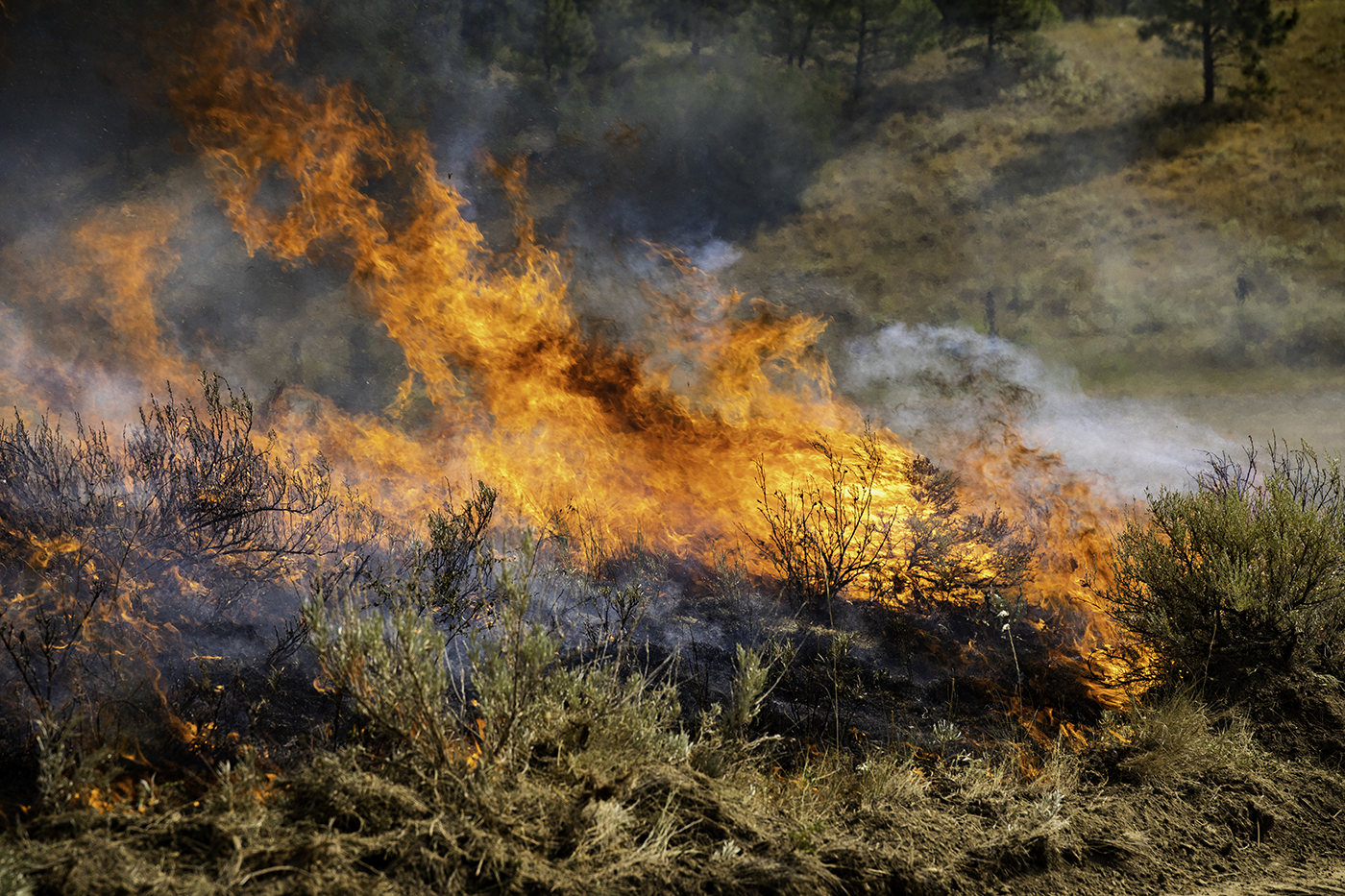
Photo credit: Austin Carlin, BLM
Current Listing Status
On May 16, 2022, the U.S. District Court for the Northern District of California overturned the U.S. Fish and Wildlife Service’s 2020 withdrawal of a proposed Endangered Species Act listing for Bi-State sage-grouse. As a result, the 2013 proposed threatened status is reinstated, 1.8 million acres is again considered proposed critical habitat, and the U.S. Fish and Wildlife Service is expected to issue a new final listing decision in the summer of 2024.

